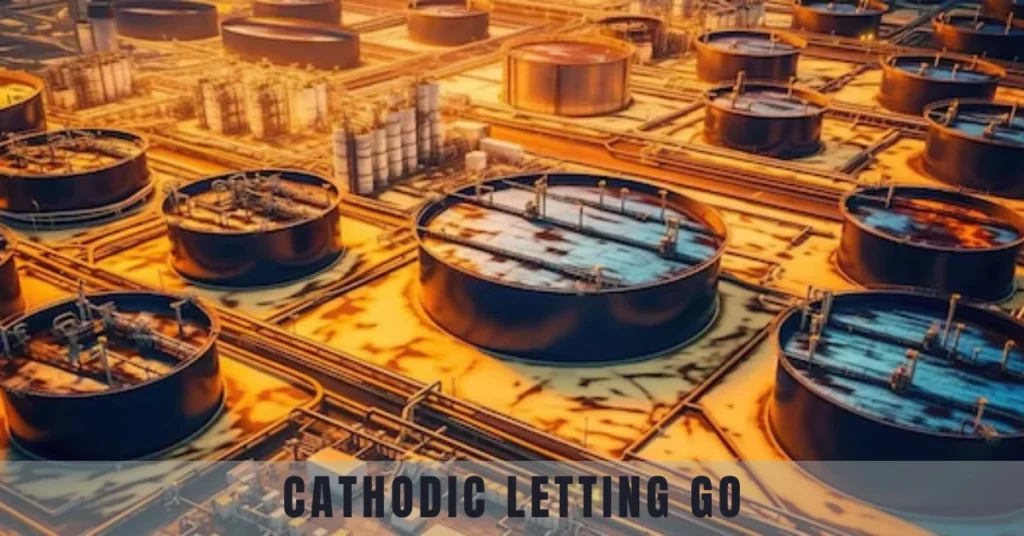Introduction
Corrosion is a silent yet relentless enemy, quietly eating away at our infrastructure and assets. From bridges to pipelines, the effects of corrosion can be devastating both economically and environmentally. But what if there were innovative ways to combat this issue? Enter cathodic letting go—a fresh approach that promises not only to protect against corrosion but also transforms how we think about maintenance strategies. In this blog post, we’ll dive deep into understanding corrosion’s impact, explore traditional methods like sacrificial anodes, and unveil the revolutionary concept of cathodic letting go. Get ready to rethink your corrosion management strategy!
Understanding Corrosion and its Impact
Corrosion is a natural process that deteriorates materials, particularly metals. It occurs when metals react with moisture, air, or chemicals in their environment. This often leads to rust formation and structural weaknesses.
The impact of corrosion extends beyond aesthetics. Damaged infrastructure can lead to safety hazards and significant financial losses. For industries like oil and gas, even a small leak can have catastrophic consequences.
Beyond economic concerns, environmental implications are also critical. Corroded pipelines can result in hazardous spills, affecting ecosystems and communities nearby.
Understanding corrosion requires recognizing its various forms—pitting, galvanic corrosion, and uniform attack are just a few examples. Each type poses distinct challenges for maintenance and repair strategies.
Awareness of these factors helps organizations develop better prevention measures tailored to specific environments. This proactive approach is essential for protecting assets over time while reducing potential risks associated with neglecting corrosion management.
The Role of Cathodic Protection in Preventing Corrosion
Cathodic protection serves as a vital defense against corrosion. This electrochemical process involves using an external power source to protect metal structures from deterioration.
By creating a negative charge on the surface of metals, cathodic protection prevents oxidation. It essentially alters the electrical environment around these materials, making them less susceptible to corrosive elements.
This technique is especially crucial for underground pipelines and tanks. These environments are prone to moisture and soil chemicals that accelerate rusting.
There are two main types: galvanic systems using sacrificial anodes and impressed current systems utilizing external power sources. Each method offers unique advantages depending on specific applications.
Proper implementation can significantly extend the lifespan of infrastructure, reducing maintenance costs over time. Understanding its role enhances overall corrosion management strategies in various industries.
The Traditional Approach: Sacrificial Anodes
Sacrificial anodes have long been a go-to solution for corrosion prevention. These metal pieces, often made from zinc or aluminum, are installed alongside structures like pipelines and ships.
Their function is simple yet effective. They corrode instead of the more valuable metal components, effectively sacrificing themselves to protect infrastructure.
While this method has proven reliable over decades, it comes with limitations. Regular maintenance and replacement of these anodes can be costly and time-consuming.
Moreover, their effectiveness can diminish in certain environments where conditions fluctuate frequently. This raises questions about sustainability as well—what happens to all those spent anodes?
As technology advances, many industries are looking beyond sacrificial systems for innovative solutions that offer better longevity and performance without continuous intervention.
Cathodic Letting Go
Cathodic Letting Go is a groundbreaking innovation in corrosion management. Unlike traditional methods, it shifts the focus from constant protection to strategic disengagement.
This approach allows structures to naturally reach equilibrium with their environment. By controlling the electrical potential around metal surfaces, it minimizes aggressive reactions without overwhelming intervention.
Imagine a system that learns and adapts over time, reducing maintenance needs while optimizing performance. Cathodic Letting Go offers just that—a responsive solution tailored for each specific scenario.
It’s not about abandoning protection; it’s about enhancing resilience. Structures can withstand corrosive elements more effectively while using fewer resources.
As industries seek efficiency and sustainability, this novel methodology provides an exciting alternative. It encourages organizations to rethink their long-standing practices and embrace modern techniques for corrosion prevention.
Benefits of Cathodic Letting Go
Cathodic Letting Go revolutionizes corrosion management by shifting the paradigm of protection. This innovative approach enhances efficiency, allowing for more effective resource allocation.
By reducing maintenance costs, companies can invest those savings into other critical areas of operation. It eliminates the need for frequent replacements and repairs associated with traditional sacrificial anodes.
Environmentally, Cathodic Letting Go offers a greener solution. With less material waste and reduced chemical usage, it promotes sustainability in industrial practices.
Moreover, this method increases operational life spans of assets. Structures benefit from enhanced durability as they withstand corrosive environments much better than before.
Implementing Cathodic Letting Go fosters a proactive rather than reactive stance toward corrosion challenges. Organizations can focus on long-term strategies instead of constantly playing catch-up with deterioration issues.
Case Studies and Success Stories
One notable case study involved a major oil refinery that struggled with pipeline corrosion. After implementing cathodic letting go, they observed a significant reduction in maintenance costs and downtime. The new strategy allowed them to reallocate resources more effectively.
Another success story comes from a marine construction company. Faced with rapid deterioration of underwater structures, they adopted cathodic letting go technology. As a result, the lifespan of their assets increased by years, leading to substantial savings on replacements.
A municipal water treatment facility also benefited. Traditional methods were failing to protect its aging infrastructure. By switching to cathodic letting go, the city not only extended the life of its pipes but also improved water quality.
These examples illustrate how innovative approaches can yield impressive results across different industries while combating corrosion challenges effectively.
Implementation Process and Costs
Implementing cathodic letting go involves a structured approach tailored to each specific site. The initial step is to conduct a thorough assessment of the existing corrosion issues and environmental factors. This evaluation helps in determining the most effective solutions.
Next, an engineering design phase outlines how cathodic letting go will integrate into your current systems. This may involve selecting materials, planning installation methods, and scheduling work activities.
As for costs, they can vary widely depending on project complexity and scale. While upfront investment might seem significant, many find that long-term savings from reduced maintenance outweigh these initial expenses.
Training staff on new technologies ensures smooth operations post-installation. Engaging experienced professionals during this phase can enhance effectiveness while mitigating risks related to implementation challenges.
Conclusion: Embracing Innovation for Effective Corrosion Management
Embracing innovative solutions like cathodic letting go can significantly transform your corrosion management strategy. This approach offers a fresh perspective on protecting assets while minimizing maintenance and costs.
As industries continue to face the challenges posed by corrosion, adopting modern techniques is not just beneficial; it’s essential for long-term sustainability. By shifting away from traditional sacrificial anodes and exploring cathodic letting go, organizations can enhance their resilience against environmental factors.
With compelling case studies showcasing the efficacy of this method, it becomes clear that innovation in corrosion prevention is within reach. Investing in these advanced strategies will pave the way for safer operations and more durable infrastructure.
The future of corrosion management lies in embracing new technologies and methodologies. Transitioning to practices like cathodic letting go ensures that you stay ahead of potential threats to your assets while promoting a healthier environment for all stakeholders involved.
FAQs
What is “Cathodic Letting Go”?
Cathodic Letting Go is an innovative corrosion management approach that focuses on allowing structures to naturally reach equilibrium with their environment, minimizing aggressive intervention and reducing maintenance needs.
How does Cathodic Letting Go improve corrosion management?
It enhances resilience by controlling the electrical potential around metal surfaces, reducing the need for constant protection and allowing structures to adapt over time, improving their durability.
What are the advantages of Cathodic Letting Go over traditional methods?
This method reduces maintenance costs, extends asset lifespan, minimizes material waste, and offers a greener, more sustainable approach compared to traditional systems like sacrificial anodes.
Which industries can benefit from Cathodic Letting Go?
Industries such as oil and gas, marine construction, and municipal water treatment can all benefit from this innovative corrosion prevention strategy, reducing maintenance and enhancing asset longevity.
What is the process for implementing Cathodic Letting Go?
Implementation involves a thorough assessment of corrosion issues, followed by an engineering design phase, installation, and training staff on the new system to ensure smooth operations and long-term savings.







